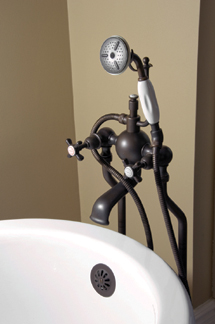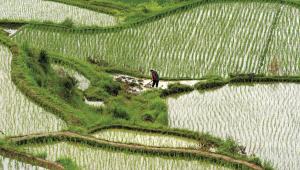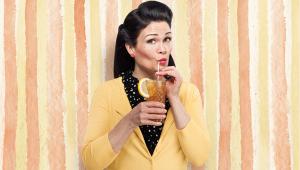Jeff Smith Captures Interiors; The D-SLR Has Heralded A New Approach To A Specialized Field Page 2
 |
 |
||
|
|
In another instance, only one SB-800 was needed to highlight a vintage bathtub
fixture, with the light slightly diffused and aloft on a light stand. Here,
however, Smith found it more expedient to set the flash to manual and trigger
it remotely with a Wein SSR transmitter on the camera's hot shoe and a
Wein receiver module on the flash itself. This is normally the path he takes
when using studio strobes.
Another situation that made use of TTL flash revolved around the interior leading
up into a widow's walk in a restored section of a house. The widow's
walk is like a balcony, except that it affords a 360° view from atop the
home, and usually out to sea. While also photographing the structure from the
outside, Smith had to preserve the delicate balance between the blue sky visible
through most of the windows and the interior itself. This confined space was
certainly no place for a studio strobe, so he simply mounted an SB-800 onto
the camera's hot shoe, allowing the flash to fill in the dark recesses.
 |
|
|
A Different Perspective On Lenses
Shooting digitally, for Smith, also meant that he could now correct for distortion
and perspective in Photoshop. That translated into one piece of glass he could
do without: that cumbersome perspective-control lens. He replaced that with
two lenses he finds far more versatile, from his perspective: a Sigma 10-20mm
zoom and a Nikon 18-200mm VR, although other lenses may enter the picture as
needed. He'll usually stop down to f/8 or f/11 to get the best image quality.
While some of his work is handheld, the camera usually finds its way to a Gitzo
carbon-fiber tripod with a Manfrotto geared head for the precision this type
of photography usually requires. Ball heads make it difficult to align the shot,
he notes, whereas conventional three-way pan/tilt heads introduce a shift when
the handles are tightened. "I don't experience that shift with this
geared head. And that's important when shooting architecture." And
to further guarantee that the image is properly aligned, he carries a small
spirit level. But when he can't achieve reasonable alignment on both axes,
he'll turn to Photoshop, first making whatever adjustments can be made
during raw conversion. "I go to a line in the center of the image and
make sure that's vertical. That is the most important first step."
After raw conversion, he'll make any further corrections with Photoshop's
Distort/Lens Correction filter (usually for distortion), although he prefers
to correct for perspective by using the Crop tool and selecting the Perspective
option.
Besides modifying his shooting and lighting techniques, Smith has adapted his workflow as well, enhancing efficiency all around. "These days I rarely even send out a FedEx package. I edit the pictures in Adobe Lightroom and CS3, upload them to an FTP site, and the client downloads them from there."
- Log in or register to post comments

















































